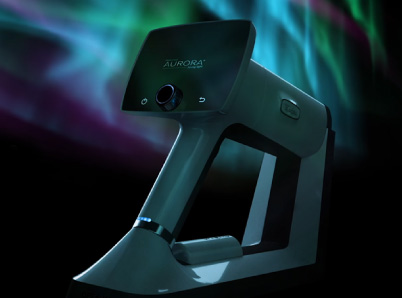Primary care physicians (PCPs) bear witness to much heartbreak, including a patient losing their sight unnecessarily. Such is the case with diabetic retinopathy, a leading cause of blindness and reduced vision in diabetic patients worldwide. More than 2.5 million people had moderate to severe vision impairment from diabetic retinopathy in 2015, a number that was projected to grow to 3.2 million by 2020, according to a study published in Lancet Global Health.
Given that the number of adults diagnosed with diabetes is expected to grow worldwide from more than 463 million in 2019 (according to the IDF Diabetes Atlas, Ninth Edition) to 700 million by 2045, the prevalence of diabetic retinopathy will also increase. In the United States, an estimated 30% of adults over the age of forty with diabetes suffer from diabetic retinopathy.
Many of these cases are preventable, and PCPs can now play a more significant role in doing so. New technology is emerging that will enable them to detect the signs of diabetic retinopathy earlier.
The technology is based on advances in imaging and artificial intelligence. Affordable and easy to operate in a primary care office or clinic, these new systems detect the signs of diabetic retinopathy. If detected, the patient then is referred to an ophthalmologist for a diagnosis.
Such technological advances offer hope to diabetic patients around the globe and provide opportunities for PCPs to grow their practices in a meaningful way by identifying the signs of diabetic retinopathy sooner.
Diabetic Retinopathy in the United States
The Centers for Disease Control and Prevention (CDC) describes diabetic retinopathy as “the most common cause of vision impairment and blindness among working-age adults in the United States.” The CDC has forecast that the number of Americans with diabetic retinopathy will reach almost 15 million by 2050, nearly doubling in forty years.
Human behavior is one of the drivers in the increase of diabetic retinopathy. Diabetic patients are frequently encouraged to pursue follow-up eye exams, but many do not. A 2017 study published in BMJ Open Diabetes Research and Care found that only four out of ten diabetes patients adhered to recommendations for follow-up care.
In a general sense, many PCPs have not been in a position to help beyond a specialist referral. They lack the time, equipment, expertise, and resources to integrate eye exams into regular visits. New technology is poised to change this by enabling the provider to spot problems sooner for referral to specialist care.
Modern Ways of Detecting Diabetic Retinopathy
New systems consisting of fundus imaging cameras and artificially intelligent software offer the promise of faster, earlier, more accurate, and immediate detection of diabetic retinopathy, including in the PCP’s office. Machine learning may be the key to reduced instances of diabetic retinopathy. It uses data analysis to spot patterns that can suggest an onset of the disease. The theory is that machines can analyze fundus camera scans at a level and accuracy that humans cannot, according to Modern Retina magazine.
Modern Retina also cited a study of 3,000 patients in India and looked at the performance of the artificially intelligent system against human readers of fundus scans. The result: the machines performed as good, if not better, than humans. “[D]eep-learning technology could make screening for retinal diseases more cost-effective and efficient,” the researchers concluded.
Using machine learning may help address one of the challenges in the prevention of retinopathy: a shortage of trained eye technicians with the skills to read and interpret retinal scans. The problem is significant both in the United States and in locations around the world, according to the Review of Ophthalmology. Retinal specialists practice in an estimated 12-20% of US counties, according to a 2019 paper presented at the American Society of Retinal Specialists conference.
Fundus cameras in the hands of more PCPs can feed imagery into a network such as eyePACs. The scans can be read centrally. Researchers consistently cite the importance of early detection in the prevention of blindness. Digital imaging systems available at primary care physicians put detection tools within easier reach of a patient.
Optomed and Diabetic Retinopathy
Optomed specializes in providing tools to help doctors screen the back of the eyes to look for signs of diabetic retinopathy and for indications of other pathologies as well. These include conditions such as glaucoma and age-related macular degeneration. The company’s goal is to enable the screening of older populations within the primary care office.
PCPs face many challenges in serving as a patient’s first line of defense against serious illness. They have to manage the needs of the patient, while making quick and accurate on-the-spot decisions with limited resources, time, and space.
Optomed has tackled this problem in the context of diabetic retinopathy and other eye pathologies by bringing the first handheld fundus camera to the market. The Optomed Aurora camera fills the gap between the PCP and the specialist. The Aurora provides images without the need for pupil dilation, and it has a 50-degree field of view, vital to diabetic retinopathy screenings.
Physicians can integrate the Aurora into their workflow, including easy connections to hospital systems. In the business of healthcare, it’s all about easing pains throughout the day while operating with limited resources.
Connectivity through digital means gives patients faster access to the necessary medical consultation. Screening can be overseen by any professional, and the images analyzed and graded by an ophthalmologist or retinal specialist remotely. The Aurora brings greater efficiency to the process of eye care screening.
Portability is a key element of this efficiency. Doctors can take the camera on home visits or to outlying clinics, wherever the patient needs them to be. It’s an easier way to document pathologies or ailments and get patients the help that they need before it’s too late.
The First Line of Defense
Advances in digital technology are providing PCPs with an incredible opportunity to fill a crucial gap in the treatment of the complications of diabetes.
Given the increasing number of people with diabetes, the ability to screen for and diagnose potentially devastating eye problems is crucial. Like all digital technology, the capabilities will only improve. Become the first line of defense for your patients by exploring new tools to identify the signs of diabetic retinopathy.
Here at Optomed, our mission is to help save the vision of millions of people. By integrating our software and artificial intelligence solutions with our camera, we enable eye screening for everyone, wherever they are. To see how we can equip you to save the sight of more patients, schedule a free consultation today!



